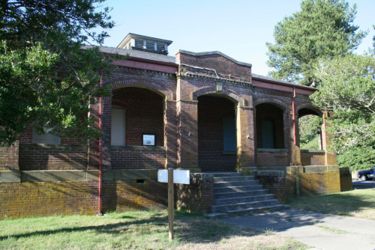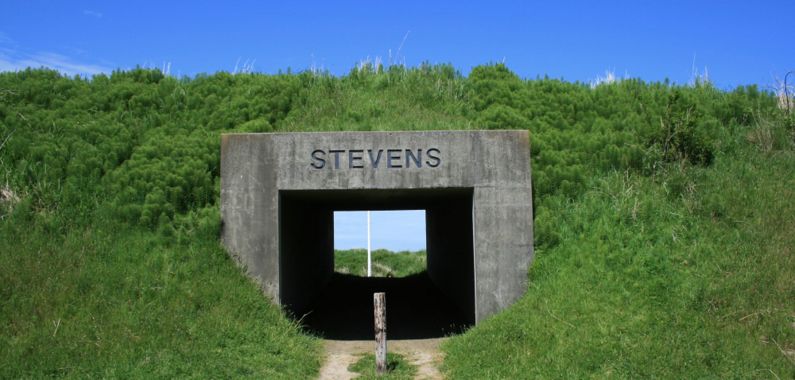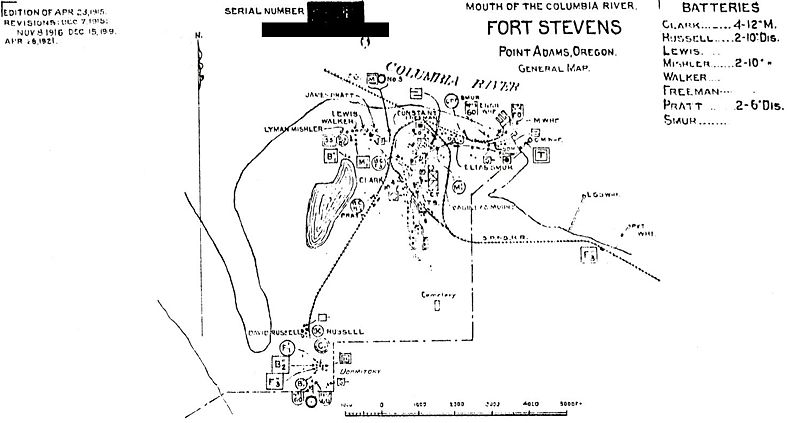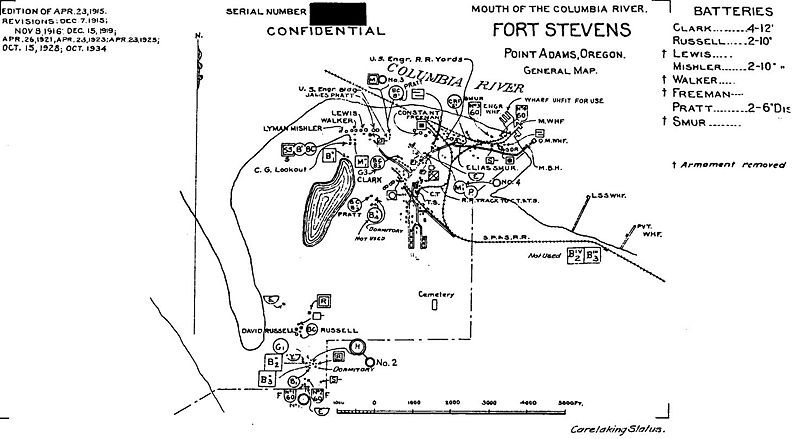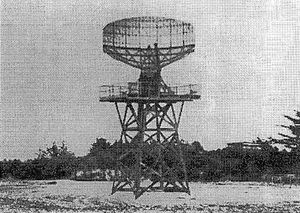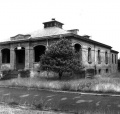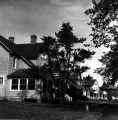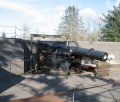Fort Stevens (1)
|
Fort Stevens (1865-1947) - Established in 1865 as a U.S. Civil War coastal fort on Point Adams, Clatsop County, Oregon. Named for General Isaac Stevens a Governor of the Washington Territory. Deactivated in 1947. U.S. Civil War (1861-1865)The original fort was an earthworks fort, built under the supervision of the United States Army Engineers starting in July 1863. The earthworks were five-sided with bastions at each corner and a salient point on the water side. The whole earthworks were surrounded by a deep wet moat. Entrance was made across the moat on a drawbridge through a sallyport. Wooden gun platforms were provided to mount 29 cannons. The Fort was completed on 8 Apr 1865 and was first occupied by a company of the 8th California Volunteer Infantry, 25 April 1865. The guns mounted by the troops included a large 15" smoothbore Rodman cannon mounted at the salient point on a center pintle and nine other Rodman guns of smaller caliber. By June 1867, twenty-six guns had been mounted. In the years between 1867 and 1882, the guns were test fired but little else was done to keep the fort in good repair. By 1880 the gun platforms were rotting out and the earthworks had deteriorated significantly. The garrison was withdrawn in 1882 and the post placed in the charge of ordnance sergeant Elias H. Brodie. Endicott Period (1890-1910)In 1897 Fort Stevens underwent a massive re-fortification program to improve the coastal defense that resulted in the construction of 8 Endicott Period concrete batteries around the original site. Two other forts, Fort Canby and Fort Columbia, were built on the Washington side of the Columbia River to complete the Harbor Defense System. The West Battery was built in 1898 with a total of six, 10" disappearing carriage rifles. The West Battery was later renamed, in three sections of two rifles each, Battery Mishler, Battery Walker and Battery Lewis. Battery Lewis and Battery Walker were traditional Endicott Period Batteries facing the Columbia River entrance. Battery Mishler was different in that the two, 10" rifles had an all-around field (ARF) of fire and could cover both the Columbia River entrance and the Pacific Ocean approaches. The six rifles of the West Battery were supplemented by two, 6" rifles of Battery Pratt. Battery Russell was built to provide additional coverage of the Pacific Ocean approaches to the mouth of the Columbia with two, 10" disappearing carriage rifles. Battery Clark was built with eight, 12" mortars (later reduced to four) that could provide plunging fire with 1,000 pound shot on the decks of hostile ships in either direction. Battery Freeman was a mixed caliber (3" and 6" guns) battery built inside the old earthworks fort.
World War I (1917-1918)Prior to the start of World War I in April 1917, Fort Stevens had a regular army contingent of about 20 officers and 450 enlisted men. This force manned Fort Stevens, Fort Canby and Fort Columbia with the majority at Fort Stevens and detachments at Fort Canby and Fort Columbia. The Oregon National Guard supplemented the regular force and trained each year at Fort Stevens. The National Guard numbered some 12 companies of C.A.C personnel. Three months after the start of the war the National Guard units were called to active duty with 55 officers and 1,350 enlisted men mobilized at Fort Stevens. Mustering in was completed in August 1917 and provided roughly one company for each battery on all three forts. By June 1918 the force had grown to 127 officers and 2,574 enlisted men. The post expanded to accommodate the increased garrison with temporary WWI buildings (frame with tarpaper covering). Buildings were still being completed late in 1918 when the 1918 flu epidemic hit the post. The flu epidemic began in September 1918 and lasted through November, over 369 men were hospitalized for flu and pneumonia but many more were isolated into a recently completed cantonment. Sick call saw 200 men each day at the beginning of the epidemic. Quick action and strict protocols undoubtedly saved many lives, but twenty-three died in October and fourteen died in November. Battery Freeman had two 6" guns dismounted and shipped away in 1917. Battery Lewis and Battery Walker had their guns dismounted and shipped away in 1918. Drastic reductions in the size of the Army in the 1920s triggered reductions in coastal armament and Battery Smur was deactivated in 1920. The post was placed in the hands of a caretaking detachment on 26 Oct 1921. The detachment consisted of five officers, one warrant officer, and sixty-one enlisted men. The number of enlisted men dropped to forty men at one point and the detachments at Fort Canby and Fort Columbia were manned by detachments of two men each. The garrison remained small until about 1935 when the number began to increase.
World War II (1941-1945)The Fort Stevens post was significantly built up just before and during World War II, peak strength occurred 1 Nov 1942 with 160 officers, 4 warrant officers, and 2,640 enlisted men. Most of the Endicott Period gun batteries were obsolete or already disarmed by the start of the war. Most of the remaining Endicott Period batteries were disarmed early in the war. Only Battery Russell remained armed until 1944 when the new World War II batteries were completed and online. Battery Mishler was deactivated in 1941 and the underground rooms became a combination Harbor Entrance Control Post (HECP) and a Harbor Defense Command Post (HDCP). Fort Stevens had the distinction of being the only stateside installation attacked by enemy forces since the War of 1812 when a Japanese submarine I-25 fired 17 shells close to the fort on 21 Jun 1942. The fort did not return the fire because the submarine was out of range of Fort Stevens obsolete guns. The submarine left without inflicting any damage.
Cold War (1947-1991)After World War II, Fort Stevens was deactivated and declared surplus 30 Jun 1947. All the armament had been removed by the end of 1947. In Sep 1950, just after the start of the Korean War, the Air Force established Fort Stevens Air Force Station (759th AC&W) on the Fort Stevens post. The Air Force Station provided long-range radar surveillance using CPS-5D and TPS-1B radar sets mounted on top of Battery Mishler. The unit headquarters was located in the "Guard House" and Battery Mishler served as the operations and maintenance center for the squadron. Fort Stevens Air Force Station moved to Naselle AFS in Washington in February 1952.
Current StatusOregon State Parks leased the old fort area in 1975 and continues restoring and interpreting the fort. Battery 245 has naval 5" guns and carriages installed and Battery Pratt has a 6" gun and disappearing carriage under construction.
See Also: Sources:
Links:
Fortification ID:
Visited: 18 May 2008, 28 Jan 2007, 15 Feb 2006, 27 Aug 2005 Picture Gallery | |||||||||||||||||||||||||||||||||||||||||||||||||||||||||||||||||||||||||||||||||||||||||||||||||||||||||||||||||||||||||||||||||||||||||||||||||||
- Visited
- All
- Oregon Forts
- Oregon All
- Preserved
- Oregon Clatsop County
- State Park
- Columbia River Forts
- Harbor Defense of the Columbia
- Coastal Forts
- U.S. Civil War Forts
- Endicott Period Forts
- World War I Forts
- World War I Coastal Forts
- World War II Forts
- World War II Coastal Forts
- Oregon Fort Trail
- Fort Stevens (1)
- Display Gun
